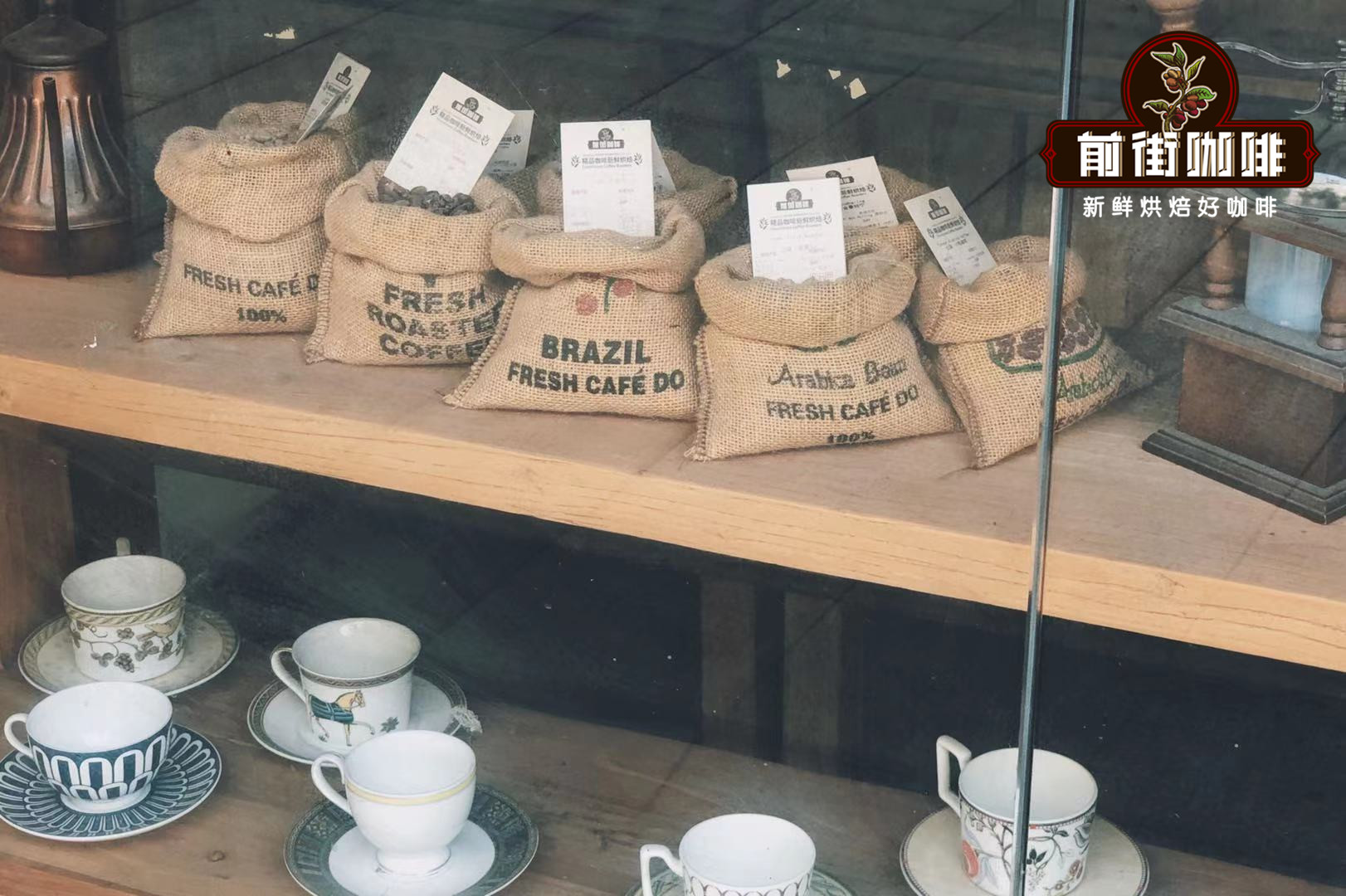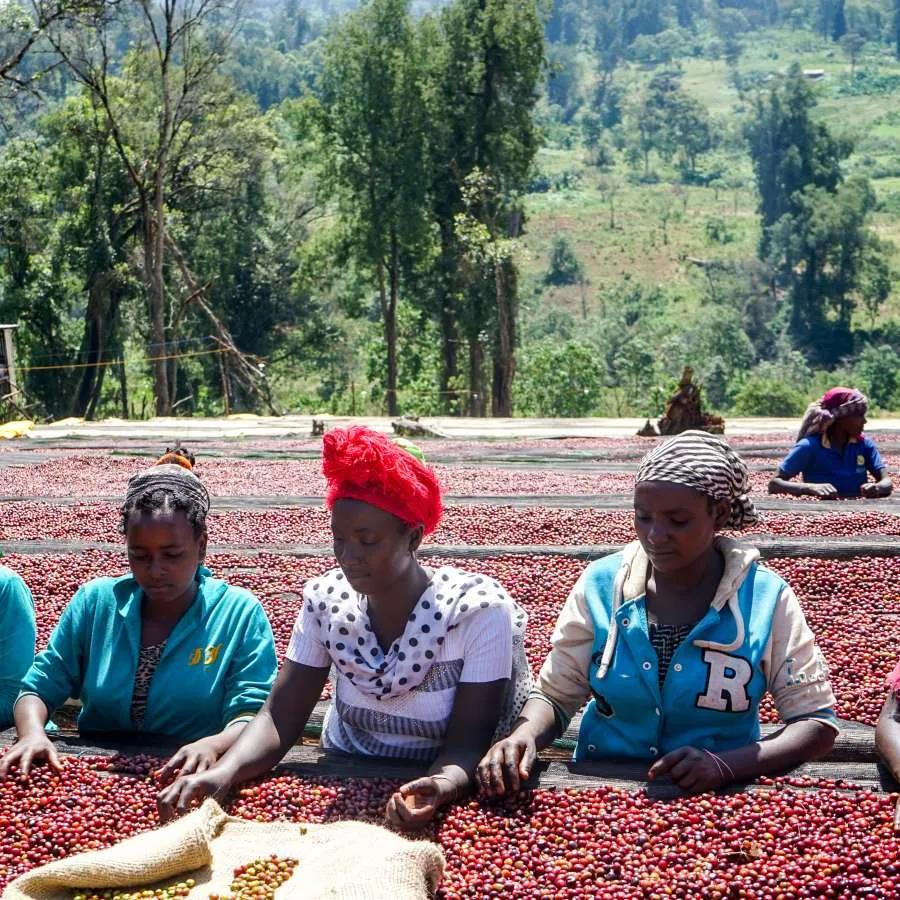Why do Ethiopian coffee beans have good quality? what conditions do high-quality coffee beans need?
I believe that many people like to drink coffee and have their own preference for coffee, such as being able to determine their bitter and sour taste. But I didn't think about where the coffee came from. What kind of environment is needed for the growth of coffee. With these questions, let me walk into this article today. The planting and growth of coffee trees need strict environmental requirements. Climate, altitude, soil, as well as the way coffee beans are picked and the process of production will affect the quality of coffee.

I. altitude
Higher altitude is more conducive to the growth of coffee, because the slow growth rate of high-altitude coffee fruit is conducive to the accumulation and production of organic acids and aromatic substances in coffee. Coffee has more flavors similar to citrus, berries, tomatoes and so on. Ethiopia, for example, is the birthplace of coffee. Why does coffee grow perfectly here? It is inseparable from his high altitude. The territory of Saifeng is dominated by mountainous plateaus, most of which are plateaus, and the central and western regions account for 2/3 of the national area of the plateau. The Great Rift Valley of East Africa runs through the whole territory, with an average elevation of nearly 3000 meters. Not only that, the coffee beans at higher elevations are hard and dense, and can give full play to the potential of special flavor.

II. Climate
1. Temperature: the optimum growth temperature of coffee tree is 15 °~ 30 °C. Ethiopia is located between 3-15 degrees north latitude, although close to the equator, but due to the high terrain, the western, southwest, southern and eastern coffee producing areas are mostly between 15-24 degrees Celsius annually, the temperature difference between day and night is large, and there is no frost in winter, so it is the best environment in Arabica.
2. Rainfall: the most suitable rainfall for growth is 1500mm to 3000mm. Plants should not be exposed to dry conditions for more than 4 months. The average annual rainfall of Ethiopian coffee is about 1500-2500 mm. It is important for the dry Hara region in the east because it is mainly caused by moist air from the southwest of the South Atlantic and moist monsoons from the southeast of the Indian Ocean. Ethiopia has a distinct dry and wet season, which contributes to the aroma and flavor of Arabica.
3. Humidity: higher relative humidity can reduce water loss, darkness can reduce temperature loss, and can better help plants grow in the dry season. The average annual rainfall of Ethiopian coffee is about 1500-2500 mm, and the tropical broad-leaved forest is natural, providing the best shading environment for coffee trees.
3. Soil
Hara in the east belongs to the Mesozoic soil layer, which is composed of sandstone and calcium carbonate; Yegashifi and Xidamo belong to volcanic soil, which is rich in minerals and the soil pH is between pH5-pH6.8. More importantly, the fallen leaves of shade trees have also become organic fertilizer.
IV. Cultivation system
Ethiopia's coffee cultivation is mainly in the western and southern region, and small farmers account for 90% of the total. Nearly 1.2 million of small farmers make a living by growing coffee, with an average planting area of less than 4 hectares, an average altitude of 1000-2300 meters, a planting density of 1000-1800 coffee trees per hectare, and a yield of nearly 600kg per hectare. Ethiopia has the most diverse coffee cultivation system in the world. According to the scale and pattern, its coffee cultivation is divided into:
● Forest Coffee: coffee trees and other crops coexist in the primeval forest without any artificial care, and farmers will pick coffee fruits regularly.
● forest-semi-forest coffee: the coffee planting area is between the forest and the range of farmers' lives. Coffee trees, like forest coffee, are naturally produced. Farmers will manage the coffee planting area and plant other cash crops.
● pastoral coffee: coffee trees are planted around farmers' living areas, and most of them are grown by farmers themselves.
● plantation coffee: large private growers with more processing facilities and production capacity, designed for efficient mass production, similar to the scientific management of enterprises in Central and South America.
With its unique conditions and love of coffee, Ethiopia has long been synonymous with fine coffee and is still a big coffee country.

Important Notice :
前街咖啡 FrontStreet Coffee has moved to new addredd:
FrontStreet Coffee Address: 315,Donghua East Road,GuangZhou
Tel:020 38364473
- Prev

Flavor and taste characteristics and producing area information of Xidamo Huakui coffee beans the difference between Sakui and Yega Xuefei
What are the characteristics of Sidamo coffee and what does it have to do with Yega Xuefei? in addition to Sakui, what is the flavor of Sidamo coffee similar to Yega Xuefei, exquisite washing or sun-drying Sidamo, which also has the scent of flowers and oranges, and is worth as much as Yega Xuefei. The varieties in the two producing areas are similar, with medium-sized beans but also small seeds with dwarf plants. that
- Next

What are the unique flavor and taste characteristics of Ethiopian coffee beans in Ethiopia?
Yega Xuefei (boutique producing area): 1800-2000 meters above sea level | Pastoral Coffee system | Yega Xuefei is affiliated to the Sidamo producing area, so it is separated separately because of its unique flavor. In addition to the small town of Yega Xuefei, it also includes three by-product areas around Wenago, Kochere, Gelena and Abaya. It happens to be on the edge of the East African Rift Valley, and the terrain is complex. From
Related
- Detailed explanation of Jadeite planting Land in Panamanian Jadeite Manor introduction to the grading system of Jadeite competitive bidding, Red bid, Green bid and Rose Summer
- Story of Coffee planting in Brenka region of Costa Rica Stonehenge Manor anaerobic heavy honey treatment of flavor mouth
- What's on the barrel of Blue Mountain Coffee beans?
- Can American coffee also pull flowers? How to use hot American style to pull out a good-looking pattern?
- Can you make a cold extract with coffee beans? What is the right proportion for cold-extracted coffee formula?
- Indonesian PWN Gold Mandrine Coffee Origin Features Flavor How to Chong? Mandolin coffee is American.
- A brief introduction to the flavor characteristics of Brazilian yellow bourbon coffee beans
- What is the effect of different water quality on the flavor of cold-extracted coffee? What kind of water is best for brewing coffee?
- Why do you think of Rose Summer whenever you mention Panamanian coffee?
- Introduction to the characteristics of authentic blue mountain coffee bean producing areas? What is the CIB Coffee Authority in Jamaica?

